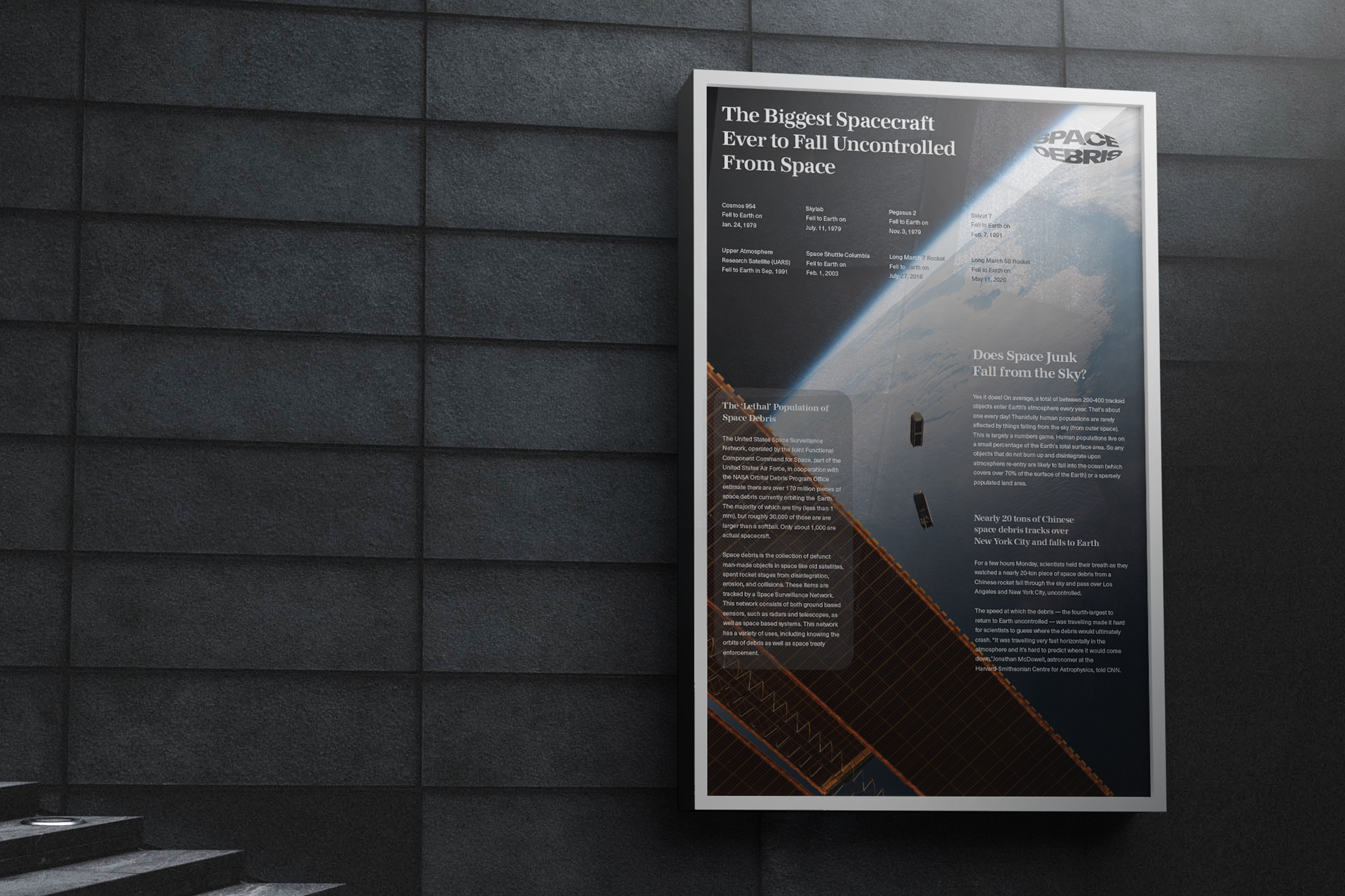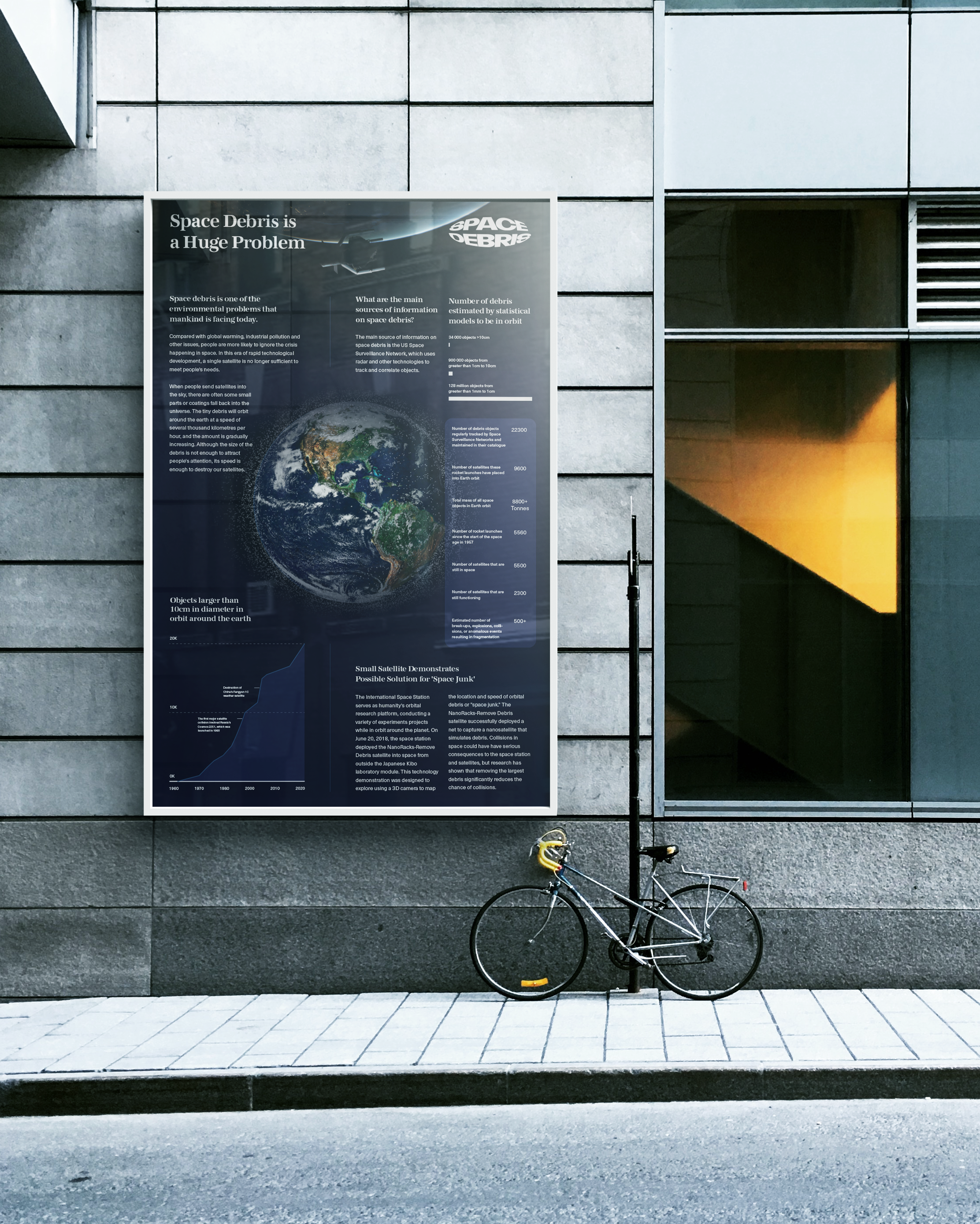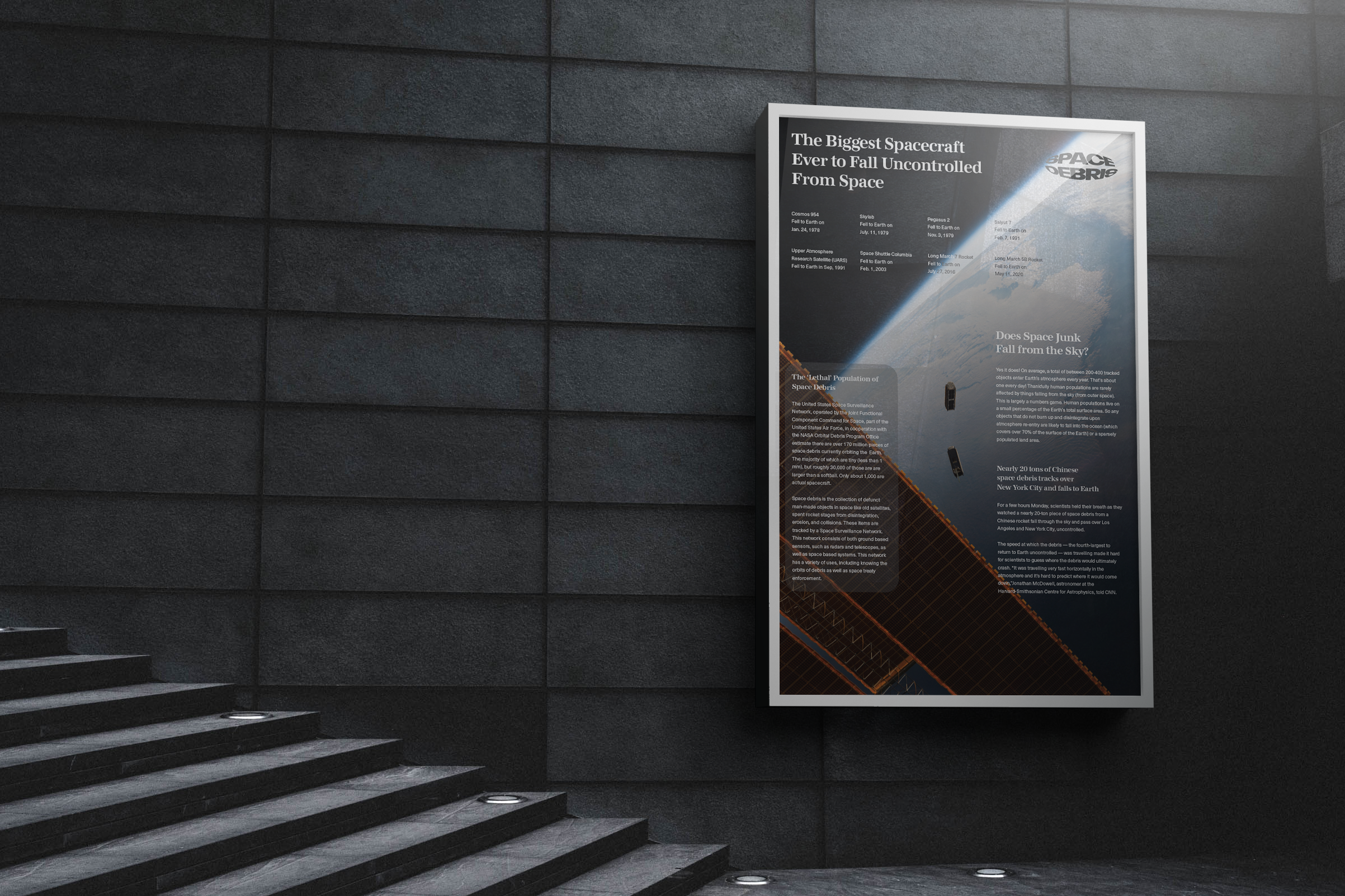Space Debris
Project Overview ︎︎︎
The Space Debris project is an educational endeavor featuring three posters designed for display in museums or science centers. The objective is to raise awareness that environmental threats extend beyond Earth to the space surrounding our planet.
Space debris poses a significant environmental challenge in our technological age, yet it often goes unnoticed compared to other issues like global warming and industrial pollution. As we launch more satellites to meet growing needs, the resulting debris, comprised of small parts and coatings, remains in orbit at high speeds. The accumulation of this space debris, though inconspicuous in size, poses a real threat to our satellites due to its velocity.
Responsibilities:
Poster Design, Project Research
Poster Design, Project Research
Tools:
Adobe Illustrator, Adobe Photoshop
Adobe Illustrator, Adobe Photoshop
Duration:
1 Month
1 Month
Type:
Poster Design
Poster Design

Challenge ︎︎︎
Maintain the right balance between providing educational information and maintaining a visually appealing design is crucial. The posters need to convey the severity of the problem while keeping the audience engaged and interested.
Solution ︎︎︎
Utilize visually engaging infographics that present key facts and statistics about space debris in a concise and easy-to-understand manner. Integrate compelling visuals, such as orbital paths and depictions of satellites, to convey the severity of the issue and capture the audience's attention.
Process Overview
Research ︎︎︎ Ideation & Concept ︎︎︎ Visuals ︎︎︎ Refinement
Reseach ︎︎︎
After researching space debris, it became evident that this critical issue is often overlooked, with many people unaware of its existence. The primary goal of this project is to enhance society's awareness of space debris, using posters strategically placed in locations frequented by teenagers and young adults, such as museums, science centers, libraries, and schools.
Ideation & Concept ︎︎︎
Initially, I intended to create a brochure alongside the posters to provide additional information. However, after crafting the initial draft of the posters, I recognized that the abundance of text could overwhelm the audience. Consequently, the decision was made to forego the brochure.


Visual ︎︎︎
The project focuses on imagery as the main subject, primarily depicting the Earth or satellite orbit paths. Information is strategically designed around these central objects. Various layout structures, ranging from three to five columns, were explored in an effort to break away from the conventional format. This approach aimed to create more space for the main imagery, emphasizing the critical topic of space debris and the outer space crisis.
Refinement ︎︎︎
In the initial draft, the column widths lacked consistency across the three posters. To enhance visual cohesion as a series, adjustments were made to ensure uniformity in column widths and layout usage. A unified wordmark was introduced in the top right corner of each poster to establish balance and consistency. Headers were standardized with consistent character styles, and additional visual elements like line graphs and pie charts were incorporated to enhance overall visual appeal.
Final Outcome ︎︎︎



Personal Takeaway︎︎︎
This project provided valuable insights into the challenges of raising awareness about less-known environmental issues such as space debris. It taught me the importance of striking a balance between educational content and visual appeal, ensuring that information is effectively communicated without overwhelming the audience. The decision to focus on posters over a brochure highlighted the significance of tailoring the medium to effectively convey the message to the target audience, fostering a deeper understanding of the outer space crisis.